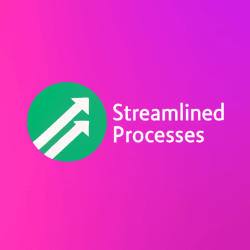For Recurring Billing Software Comparison, see our main page here.
Why Businesses Need Recurring Billing Tools
Recurring billing software automates payment collection for subscriptions or ongoing services. As subscription models grow, these tools become essential for reducing errors and saving time. Businesses from SaaS to utilities rely on recurring billing to manage predictable revenue streams.
Without automation, tracking payments, renewals, taxes, and invoice rules can overwhelm finance teams. Errors often lead to chargebacks or customer churn. In other words, reliable billing software boosts efficiency and customer trust.
Additionally, recurring billing solutions often integrate with CRM and accounting platforms. This helps streamline operations while improving data accuracy. As subscription services continue expanding globally, choosing the best-fit software becomes critical.
Key Features to Consider in Recurring Billing Software Comparison
When making a Recurring Billing Software Comparison, it’s important to look beyond just price. Modern tools offer a wide range of features that can directly impact the user experience, accounting accuracy, and scalability of your business.
- Automated Invoicing: Schedule recurring invoices with customizable templates and currency options.
- Payment Gateway Support: Accept credit cards, ACH, PayPal, and more.
- Prorated Billing: Adjust billing cycles when users upgrade or downgrade plans.
- Dunning Management: Handle failed payments automatically with retry logic and reminders.
- Tax Compliance: Safeguard your business with automated tax calculations and jurisdictional compliance.
- Analytics and Reporting: Generate revenue, churn, and retention insights for better business decisions.
For example, SaaS companies often need tools with granular control over plan tiers and billing intervals. On the other hand, media and training platforms prioritize frictionless user experiences and quick renewals.
Top Platforms for Recurring Billing Software Comparison
There are multiple popular tools in this space, but functionality, scalability, and pricing structures differ widely.
Chargebee
Chargebee offers flexible billing and subscription features ideal for mid-market SaaS providers. It supports metered billing, trials, coupons, and integrations with Stripe, QuickBooks, and Salesforce. For instance, Chargebee helped Freshworks scale globally by adapting to different currencies and tax rules easily.
Recurly
Recurly stands out with its intelligent dunning system. Businesses using it have reported revenue recovery rates above industry average. It’s great for businesses focused on scaling retention and handling high volumes of recurring payments seamlessly.
Zuora
Used by enterprise giants like Zoom and Box, Zuora supports complex workflows and unique subscription logic. Its integration into broader enterprise software makes it a robust, though higher-cost, solution. It handles international compliance and global taxation efficiently.
Stripe Billing
Stripe Billing works smoothly for startups and scale-ups already using Stripe payments. The API-first approach makes customization easy for tech-savvy teams. For example, a coding bootcamp used Stripe to automate billing and cut support requests by 40%.
FreshBooks
FreshBooks targets freelancers and small teams. While not as feature-rich as others, it’s cost-effective with reliable recurring invoicing and simple reporting. This makes it a popular choice for solo entrepreneurs and creative agencies.
How Pricing Models Affect Your Decision
Another important factor in Recurring Billing Software Comparison is how platforms charge you, not just what they offer. Generally, software providers use one of the following models:
- Flat Monthly Fee: Predictable but less scalable for fluctuating volumes.
- Revenue Share: Percentage of transactions; ideal for startups with lower upfront costs.
- User-Based Pricing: Cost per team member or admin using the platform.
For example, a bootstrapped SaaS company may prefer revenue share initially, whereas a funded company could absorb a monthly flat rate for added features and support access.
Trends Shaping the Recurring Billing Software Landscape
Various shifts in digital consumer habits, privacy laws, and AI are reshaping recurring billing needs. As a result, businesses require more than just payment automation—they need flexibility, compliance, and intelligence.
- Cross-border Billing: As businesses scale globally, multi-currency and localized tax rules are crucial.
- AI-Powered Forecasting: Modern tools now offer revenue predictions and fraud detection powered by machine learning.
- More Self-Service Options: Users want to update billing info, adjust plans, and access invoices without contacting support.
To clarify, modern software must evolve with compliance standards like GDPR or PCI-DSS as well. Therefore, prioritizing secure and compliant systems is now non-negotiable.
Expert Tips for Evaluating Recurring Billing Tools
From our experience helping dozens of businesses select automation tools, there are some proven tips when performing a Recurring Billing Software Comparison:
- List your top three workflow needs and validate compatibility during software trials.
- Check integration capabilities with your CRM, accounting, and marketing stacks.
- Request demo access rather than relying exclusively on public documentation.
- Evaluate customer support quality—SLA terms, chat support, and uptime guarantees can differ widely.
Moreover, talk to other users in your industry via review platforms and forums. In many cases, hearing real feedback shortens the decision-making process and helps avoid buyer’s remorse.
Common Questions About Recurring Billing Software
What’s the learning curve for most platforms?
Most modern tools like Chargebee and Stripe Billing are user-friendly. However, enterprise-level systems like Zuora may require IT involvement or onboarding support.
Is there a difference between recurring invoicing and recurring billing?
Yes. Recurring invoicing sends bills automatically, but recurring billing also handles payment processing, retries, compliance, and revenue tracking.
Can I migrate billing platforms if needed later?
Yes, but it takes planning. Exporting customers securely, preserving billing histories, and resetting autopay logic are challenges. Most vendors offer consultative migration services to simplify it.
Do these tools help with failed payments?
Absolutely. Robust dunning systems handle reminders, retries, and card updates to minimize churn from failed payments.
Final Thoughts
Conducting a Recurring Billing Software Comparison isn’t just about picking a tool—it’s a strategic decision. What works for a SaaS startup may not suit an accounting firm. Therefore, focus on long-term scalability, workflow compatibility, and support quality.
This article was created with the assistance of AI tools and reviewed by our team at Streamlined Processes LLC to ensure accuracy and relevance.
Follow us on Facebook here.

